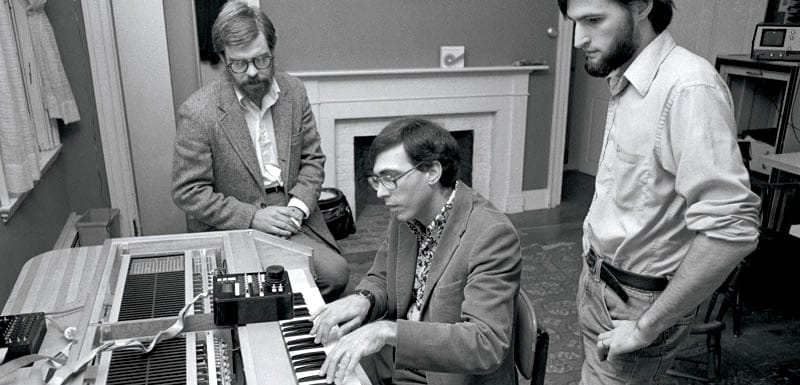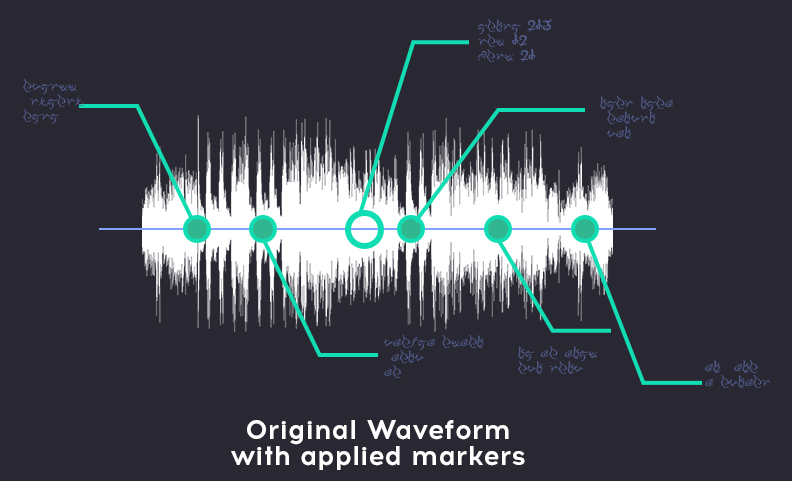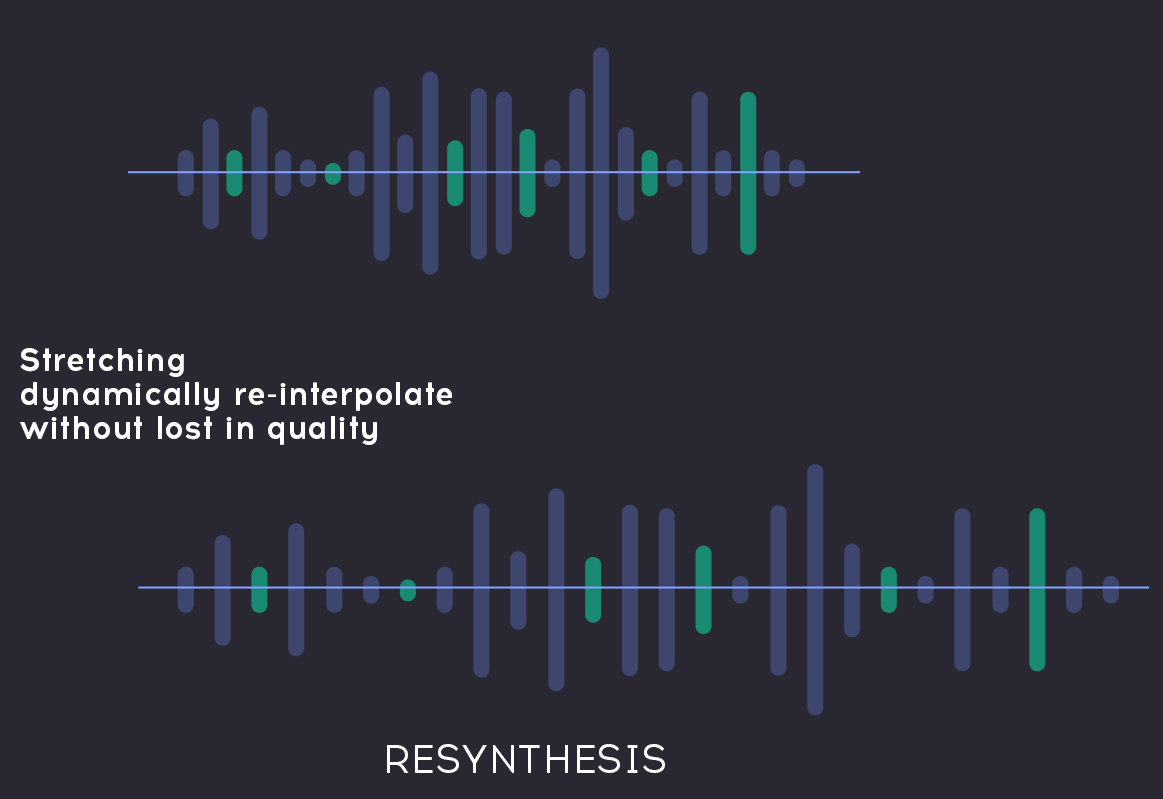Resynthesis
Recreation:Synthesis
1983
Resynthesis was born.

The original Synclavier was New England Digital’s competitor in the fledgling digital instrument market. To go up against the revolutionary but primitive audio samplers of the time, Cameron Jones and his team developed a totally new audio technique to recreate sound. Rather than relying on samplers with low memory and lo-fi converters, the Synclavier could mathematically analyze audio and mimic it using “recreation synthesis”.
2018
Resynthesis was born again.

With version 2, Synclavier V has taken the next step in becoming the most authentic, powerful Synclavier emulation ever made. You are now free to use sample playback and resynthesis capabilities of Synclaiver V to their full creative extend, just as Cameron Jones envisaged, without worry about the limitations of hardware.
Powerful features, simple workflow
The technology behind sampling and resynthesis was "out of this world" when the original instrument hit the market. Now, thanks to the power in your computer, you can resynthesize sounds with ease.
Import your own samples
For our new sample playback and resynthesis engines, the first step is to import an audio sample. You can do this by navigating within the synth’s own browser, or by simply dragging and dropping from your OS or your DAW. Synclavier V also includes hundreds of samples for you to explore, including all of the original hardware’s sample library.
Perform with vintage sound
Your sample will play back with authentic grain, just like a vintage digital sampler. A simple but effective algorithm, the higher the pitch the faster the sample will play back, and the lowering the pitch will elongate the sound. Perfect for creating pads, percussion, hits, and weird effects.
Transform samples to synth sounds
Engage the resynthesis engine with the touch of a button, and the characteristics of your sample will be analyzed and instantly transformed into a synth sound, ready for you to perform. Explore and reinvent your sound with ease!
Refine and evolve your sound
Either let Synclavier V use its automatic detection to resynthesize your sample, or manually identify key points in the sound to focus on particular textures or articulations to create truly unique, personal synth sounds.

Talk nerdy to me
Resynthesis is a method of using a synthesizer to emulate any sound, giving you the tonal character of the original sound with all the benefits of a synthesizer’s controls.

To achieve resynthesis, Synclavier V can analyse an audio sample up to 30 seconds in length. This sample can be anything, from a bird’s call to a car engine, a saxophone to a scream. Once the sample is loaded, Synclavier V will automatically determine key points in the audio that define its character.

Users can also remove, add, or adjust these key points manually to achieve their desired sound. Using a unique combination of wavetable and FM synthesis, Synclavier V then “joins the dots” of the sample to create a synthesized version of the sound.
Trumpet Original
Arturia
Sampled sound using the "4 Trumpets Unison" sound file from the original NED Library.
Trumpet Resynthesised
Arturia
Synthetic version of the same sound made using automated resynthesis.


This new, entirely synthesized sound can be performed just like a regular synthesizer patch. The ADSR can be changed, oscillators can be adjusted, filters can be applied, LFOs can be synchronized, parameters can be routed in whatever way you want. The only limit is your imagination.
To help you visualize and understand resynthesis, a good analogy is to compare raster and vector graphics. Raster, or bitmap images are a set size and shape, and scaling them up or altering them has its limitations, and quality can soon degrade when you apply too many effects, just like an audio sample. Vector graphics use mathematical equations to draw perfect lines, letting you scale and warp them without losing definition, just like a synthesized sound.

Synclavier V now includes classic sounds from the New England Digital sample libraries. Originally sold on 1GB 12” optical WORM drives for $15,000 each, their inclusion in Arturia’s recreation keeps the instrument true to its roots, giving a new generation of musicians the most authentic Synclavier experience ever.

I like the sounds! They bring back great memories. Some of the acoustic bass samples were actually recordings of me, as I was a professional orchestral musician during the mid-80s.
The fun of resynthesis is that you can get quite unpredictable results, and lots of happy accidents. Resynthesis works well on sustained sounds such as vocals and brass, but sometimes it utterly fails and yields results that bear no resemblance to the original sound. At the 1983 Synclavier summer session we hosted at Dartmouth College, I drew the comparison of resynthesis and fuzz tone for guitars. "One person’s distortion is another’s hit record", and it’s still true today!
Cameron Jones
Original Creator of the Synclavier
"Ecoutez
et répétez"
It's one thing to describe, but it's another thing to actually hear for yourself.
Resynthesis is a rare form of synthesis, and although it's been in development for over 40 years, is still in its infancy. It's exciting, it's fresh, it could be exactly the sound you've been searching for. Take a listen to some of these demos created by our dedicated sound team.
Celestial
Simon Gallifet
Complex ambient track made exclusively with Synclavier V2, using presets that make the most out of the newer features.
New Land
JMB
All sounds were created with the Synclavier V2 except the snare drums, Hi Hat and cymbals sounds
Paltan
Victor Morello
Electro and melodic track. The presets used in this track are : Butter, Morphing Chorus, Yet So Efficient, Squary Mellow and Initialize System. Additional drums from the Ableton core library.
